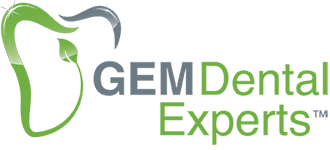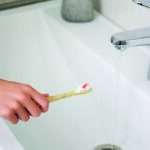
September 13, 2021
by Gabriele Maycher, CEO, GEM Dental Experts Inc. BSc, PID, dip DH, RDH
It has nothing to do with your age – or where or when you graduated – but everything to do with your commitment to excellence.
When new procedures and techniques become available, do you update and adapt your clinical strategies to provide superior patient outcomes? If so, you may be a new generation hygienist.
These clinicians are truly best in class, following industry “best practices” and expanding their knowledge and skills to integrate the latest evidence-based therapies and protocols into everyday clinical practice. So, what exactly, does that look like? There are two ways to immediately spot the best-in-class hygienist:
1. The hygienist is using the 2018 AAP Periodontal Classification. A great hygienist will leverage all the key classification concepts in achieving both oral and systemic health. These guidelines have been around for three years now, and while most practices will take 10 to 20 years to integrate the concepts, the most elite 14 percent of clinicians are already integrating the protocols into practice.1 This classification is here to stay, so it’s vital that your team begins the process of studying and implementing the new standards.
2. The hygienist takes a more holistic approach to periodontal therapy and periodontal health maintenance. With our understanding of the complex interplay of periodontal disease, including the impact of subgingival biofilms, host immune response, and predisposing and modifying factors, we no longer consider periodontal disease to be a simple bacterial infection.2
The AAP’s staging and grading system was developed knowing the inflammatory influence periodontitis has on systemic disease, and it assists you in considering all dimensions of the patient’s oral and overall health in optimizing outcomes. Other than obesity, periodontitis is the most common modifiable contributor to the systemic inflammatory burden.3 New generation hygienists know this and have shifted their focus from a biofilm-based protocol to an inflammation-based therapy and maintenance protocol.2
Delivering this type of precision medicine means addressing the predisposing factors (PF) impacting the periodontium (open contacts, occlusion, iatrogenic factors, supracrestal impingement, clenching, grinding, etc.), as well as modifying factors (MF), such as smoking, diabetes, stress, weight, rheumatoid arthritis, medications, etc. that are contributing to systemic inflammation. Keep in mind that only “20% of plaque biofilms account for the direct risk of developing periodontitis, and the remaining 80% of direct and indirect risk is due to PF and MF.”3 The good news is that you can address all three of these elements – biofilms, predisposing factors, and lifestyle/modifying factors – during periodontal therapy, maintenance, and prognosis phase.
While the process of care, ADPIE, has not changed, some guidelines continue to evolve. So, let’s take a closer look at how new generation hygienists approach Assessments, Diagnosis, Treatment Plan, Implementation, and Evaluations.
Assessments
New generation hygienists use radiographs as an integral part of dental hygiene diagnosis. They know that the ability to see the interproximal crestal bone is essential in determining bone loss, so horizontal bitewings are no longer the radiographs of choice. Instead, vertical bitewings are the gold standard.
Also, because periodontitis affects approximately 65% of North Americans 65 years of age and older,2 most of your patients will have a FMS as a baseline (periodontitis is episodic in nature, nonlinear, and disproportionate due to an assortment of risk factors).4 This baseline can help you calculate the site of greatest loss (% of root length) for Staging and determine Grade with either direct evidence (a comparison of radiographic history) or indirect evidence (% bone loss ÷ age).3
The best hygienists are thorough with their comprehensive exam, knowing that each assessment impacts the ability to make an accurate dental hygiene diagnosis, determine the complexity of treatment, assess future risk of progression and responsiveness to therapy, and establish a prognosis. A huge emphasis is placed on the “Percentage of Bleeding on Probing” (%BOP) assessment. Even before you visually can see the signs of inflammation (redness and swelling), %BOP is the earliest indicator of gingivitis.2 It directs your treatment plan: nonsurgical periodontal therapy (NSPT) vs. maintenance appointment, and three-month vs. six-month maintenance interval. It determines the parameters of health, including gingival disease and active or recurrent disease for patients with periodontitis. And as a result, you’ll find it’s no longer appropriate to use vague statements like “patient has generalized moderate bleeding with localized heavy bleeding on lower anteriors.” The %BOP assessment is just too important for ongoing decision making to ignore or bypass altogether.
Recession occurs frequently in the adult population for many reasons, most of which have nothing to do with poor self care. In fact, recent surveys found, “gingival recession occurs in 88% of people aged ≥65 years and 50% of people aged 18 to 64 years.” Predisposing factors are typically the contributing culprit, and they include thin periodontal biotypes, orthodontic forces, cervical restoration, open contacts, and facial aging to name a few.5 In clinical practice, the best hygienists recognize the difference between recession due to biofilms vs. predisposing factors and describe it clinically using the new recession classification of Recession Type 1, 2, 3.
Diagnosis
A new generation hygienist understands that three different periodontium exist: A) intact, B) reduced periodontium due to predisposing factors or non-periodontitis, and C) reduced periodontium due to periodontitis. This makes it easy to determine an accurate diagnosis. Plus, it helps you understand that the parameters of health and gingivitis may differ on each of these periodontium. Health on an intact and reduced periodontium due to predisposing factors is defined the same: <3mm PD, <10%BOP. Gingivitis on an intact and reduced periodontium due to predisposing factors is the same for both as well: >3mmPD and or >10% BOP.
A patient with a reduced periodontium due to periodontitis suggests that health (<4mm PD, <10% BOP and no 4mm PD bleeding), gingival diseases (<4mm PD, >10% BOP but no 4mm PD BOP), and recurrent periodontitis (>4mm PD, and or 4mm PD BOP) can exist but only once a periodontitis patient has achieved health or has been in a period of stability for a minimum of a year. If you have never achieved health and stability, you have active periodontitis, and only by knowing these parameters of health and disease can you diagnosis accordingly.
Treatment Planning
Gone are the days when every 5mm PD was referred to a periodontist. With the advances in technology, therapeutic approaches, and training, a confident clinician can treat and manage patients with all levels of periodontal disease, even severe periodontitis. Our new generation hygienists are achieving clinical outcomes that were not previously possible.3
When treatment planning, you always start with the end in mind: the parameters of health for the gingivitis and periodontitis patient. Focusing on a customized homecare from best-in-class adjuncts like the electric toothbrush (such as Oral-B iO) and oral irrigation (like Waterpik) may result in up-to-2mm pocket depth resolution before you even start treatment, and your thorough NSPT may result in another 2mm pocket resolution.
Your patient-centred care plan may include other adjunctive therapeutic procedures like laser disinfection therapy, antimicrobial agents, hyaluronic acid gels (Gingigel), modulation of host defense (Periostat: doxycycline hyclate), and so on to achieve therapeutic endpoint. When you have exhausted all the options in your NSPT tool belt, interprofessional collaboration between dental, medical, and allied health professionals to control both predisposing factors and modifying factors becomes another essential component of your care plan to achieve superior patient outcomes.
Implementation
For successful implementation, a new generation hygienist will take the appropriate amount of time needed to achieve therapeutic endpoint. When you consider that 95% of patients have gingivitis,2 chances are it’ll take more than one “cleaning” appointment to get to health in the vast majority of patients. In the patients with higher levels of periodontal disease, treatment planning sextant scaling is not unreasonable. And in some cases, perhaps two rounds.
The industry’s best hygienists are not scaling and root planing or focusing on calculus and cementum removal to achieve therapeutic endpoint; they have shifted to therapeutic strategies focused on biofilm disruption and conservation of tooth structure, or the new modern age of periodontal debridement therapy. In the process of disrupting dental deposits and plaque-retentive dental calculus and creating a biologically acceptable root surface, the goal is to conserve dental cementum to assist in re-establishing and maintaining a healthy periodontal environment.
Hand instrumentation is no longer the periodontal debridement therapy of choice. The gold standard in instrumentation has moved to lasers and ultrasonic or piezo instrumentation, and EMS-guided biofilm therapy. The current evidence-based literature demonstrates the effectiveness and advantages of these instruments, and most progressive clinicians are using these tools.6
Evaluation
When evaluating, be sure to implement all three “Rs,” retreat, recall, and refer as per the original care plan. Rather than blaming poor outcomes solely on the patient’s poor oral self-care, a new generation hygienist evaluates their therapeutic approach, therapies, and clinical skills as well.
If therapeutic endpoint is not achieved, retreat via NSPT (localized or generalized) and or apply adjunctive therapies. If you have achieved the parameters of health, then recommending a three-month maintenance interval for your periodontitis patients for life (remember, these patients remain at high risk for recurrent disease compared with a gingivitis or health patient7,8, and NSPT patients for a minimum of a year is needed to achieve stability.
As for referrals, new generation hygienists will refer the modifiable predisposing factors affecting the periodontium (dentist, dental specialist) and modifying/lifestyle factors (MD, ND, or Nutritionist etc.) if not done already. If endpoint is not achieved via NSPT and/or if the patient has Stage III or IV periodontitis, now is the time to refer to the periodontist for surgical periodontal therapy.
Prognosis under the new classification is defined as either disease stability or remission/control and is differentiated based on the ability to control inflammation, reducing or eliminating both predisposing and modifying factors.9 Therefore, you not only evaluate prognosis at the patient’s initial appointment but after every appointment to determine if any further treatment is needed and/or the potential for future disease progression.
You are on your way
By embracing the latest classification, techniques, instrumentation, and protocols, you will be well on your way to becoming what our patients and our industry need most: a new generation hygienist. Through your renewed commitment to excellence – and confidence in your ability to achieve superior patient outcomes – you will create enormous value in the therapy you provide. You know that the value of oral and systemic health is priceless, and so are you!
References:
- OralHealth November 12th, 2019, Issue, “Bridging the Gap” by Mark H.E. Lin, BSc, DDS, MSc(Prostho), FRCD(C)
- Lang NP, Bartold PM. Periodontal health. J Periodontol. 2018;89(Suppl 1): S9–S16. https://doi.org/10.1002/JPER.16-0517
- Tonetti MS, Greenwell H, Kornman KS. Staging and grading of periodontitis: Framework and proposal of a new classification and case definition. J Periodontol. 2018;89(Suppl 1):S159– S172. https://doi.org/10.1002/JPER.18-0006
- Goodson JM, Tanner AC, Haffajee AD, Sornberger GC, Socransky SS. Patterns of progression and regression of advanced destructive periodontal disease. J Clin Periodontol. 1982;9:472–481.
- Cortellini P, Bissada NF. Mucogingival conditions in the natural dentition: Narrative review, case definitions, and diagnostic considerations. J Periodontol. 2018;89(Suppl 1):S204–S213. https://doi.org/10.1002/JPER.16-0671
- Ultrasonic Periodontal Debridement: Theory and Technique, Marie D. George, Timothy G Donley and Philip M Preshaw. 1st Edition, 2014 by John Wiley & Sons, Inc. pg. 35
- Caton J, Armitage G, Berglundh T, et al. A new classification scheme for periodontal and peri-implant diseases and conditions – Introduction and key changes from the 1999 classification. J Periodontol. 2018;89(Suppl 1):S1–S8. https://doi.org/10.1002/JPER.18-0157
- Chapple ILC, Mealey BL, et al. Periodontal health and gingival diseases and conditions on an intact and a reduced periodontium: Consensus report of workgroup 1 of the 2017 World Workshop on the Classification of Periodontal and Peri-Implant Diseases and Conditions. J Periodontol. 2018;89(Suppl 1):S74–S84. https://doi.org/10.1002/JPER.17-0719
- Lang NP, Bartold PM. Periodontal health. J Periodontol. 2018;89(Suppl 1): S9–S16. https://doi.org/10.1002/JPER.16-0517





Leave a Reply
You must be logged in to post a comment.